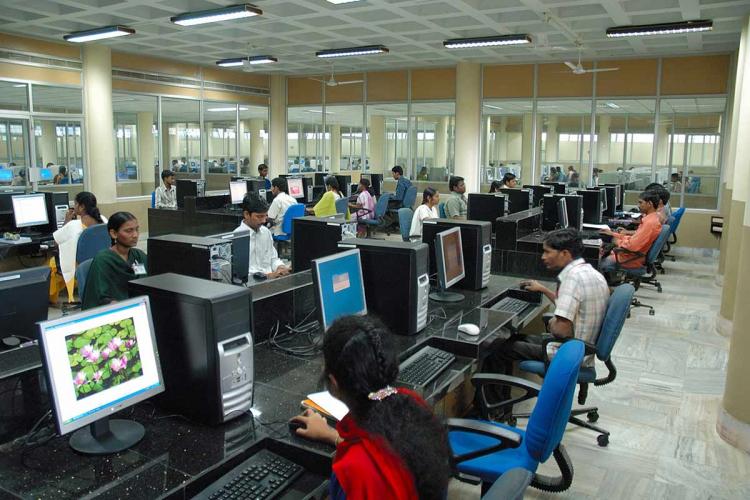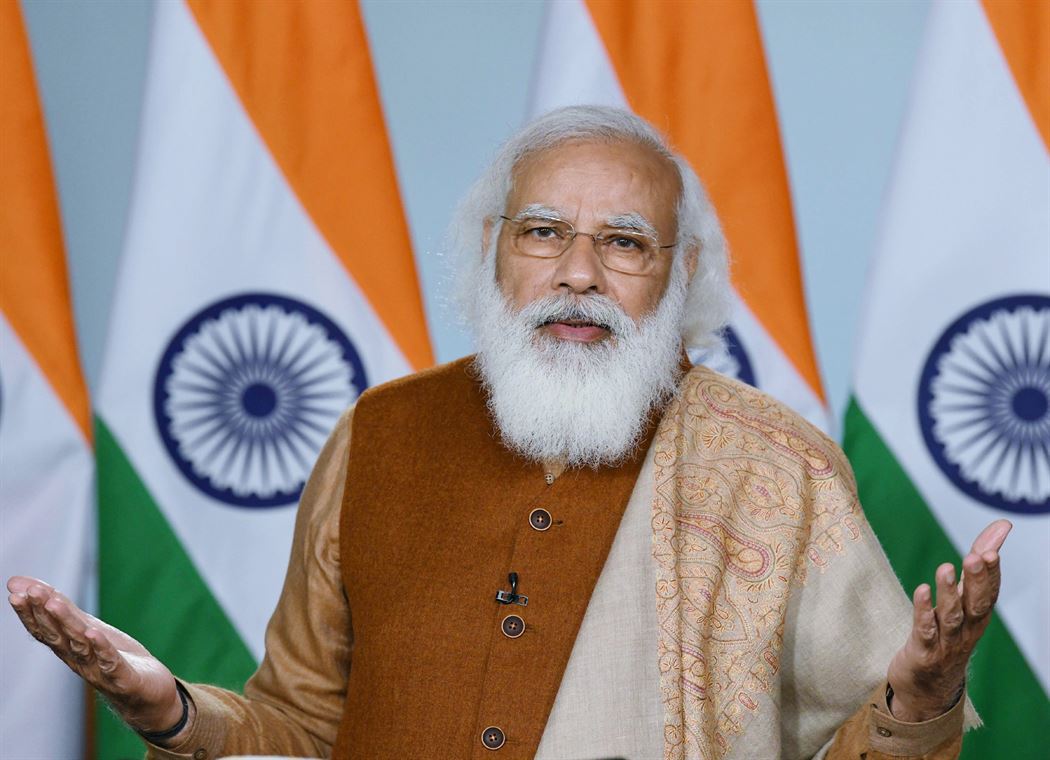PROBING THE PARAMOUNT POLICY OF ‘MAKE IN INDIA’ – A DREAM OR POLITICAL BANALITY

India is a country with rich natural resources and cheap availability of skillful labours. A huge population of the country consists of unemployed educated class. With Asia emerging as the world’s outsourcing powerhouse, India is quickly becoming the favoured manufacturing site for most global investors. The Indian government’s initiative to harness this demand and promote the Indian economy is known as Make in India. India holds a very low rank in “ease of doing business index”. One of the most well acknowledged disadvantages of manufacturing and investing in India is the incompatibility of the country’s labour laws with the Make in India initiative. The Indian manufacturing sector is a perfect example of a high-potential industry.
By Abhishek Tripathi & Diksha Chouhan
Make in India is one of the key initiatives of the central government, which were formed to promote industrialization in India and reduce the import goods by establishing import facilitating investment, fostering innovation, enhancing skill development, protecting intellectual property and building best in class manufacturing infrastructure. The eventual aim is to ensure that India becomes a preferred destination for manufacturing across the world.
A reason for initiation of this initiative was the contribution of India’s manufacturing sector to GDP was lower than most Asian economies, including that of poorer neighbours such as Bangladesh and Pakistan. The share of the manufacturing sector was a little smaller than the average for lower middle-income countries, and significantly lower than the average for upper middle-income countries such as China.
The goal of the Make in India project was to reach the manufacturing sector contribution to 25 percent of the GDP as compared to 14 percent of the GDP in 2014.
Self Reliant Dream: The Road Ahead
The newly launched Aatmanirbhar Bharat Abhiyaan has been like a breath of fresh air for Indian manufacturers. Increase in the state governments’ borrowing limits, privatisation of Public Sector Enterprise (PSEs), collateral-free business loans, MSME corpus and subordinate debt, disallowing of foreign firms in government tenders up to Rs 200 crore, and reduction in tax rates serve as being the major policy highlights. The major objective of this project was to increase manufacturing in 25 sectors which included aviation, defence, electronics etc. Moreover, ease of doing business has been another focus of this program that is set to rectify the challenges in the current business environment of India.
This initiative has been essentially an invitation to developed and developing countries to come to India and invest in the country’s development. It was same as inviting countries to establish businesses in India and manufacture goods in our territory. The program has a great impact on the economy of India. The thought behind inviting the big companies was that if the companies would establish their branches in Inda then this could easily affect the GDP of the country. The government laid down a policy framework to ease of business, ease foreign investment and management of intellectual property. This encouraged the industries to set their manufacturing bases in India. The most important aspect of this initiative is that it helps to bring manufacturing and production knowledge to the population of India fand creates huge employment opportunities.
The PM’s vision statement had four elements. First, a step up in public spending and investment, aimed at promoting welfare and raising the investment rate; second, policy reforms aimed at making the domestic economy more globally competitive; third, a long-term structural shift making the economy more “self-reliant” and less dependent on the world economy. The fourth wheel of this new growth engine will be Lockdown Model 4. Moreover, a slogan of “Zero Defect Zero Effect” was raised by the Prime Minister as an essence of the initiative which meant that the products produced should be free from defects and should not cause any adverse effects on the environment or ecological system.
Increased public spending will certainly boost demand and generate employment in the short term and add to infrastructure capacity in the medium term. Policy reform, including changes in land, labour and other policies, could yield results in the medium term. But for the current situation, investors will wait and watch in order to test the sincerity and efficiency of governments at the Centre and in the states. They will wait to see how the various policy steps being announced by the Finance Minister get implemented — how quickly and how efficiently. The government can meet success if investors, consumers and other economic agents believe in the commitment of the political leadership and the capability of the administration to deliver.
Highlights & Challenges of the Policy
The policy has been able to garner international attention. From the technical hub of the world- Silicon Valley to a small town of Europe, there is interest and investment flowing from all corners. Through his travels, Narendra Modi has become a messenger of the initiative of ‘Make in India”. There has been considerable growth in the FDI Indian states are receiving. India was among the top 10 countries who received the maximum FDI by attracting $49 billion in inflows. Various automobile manufacturing plants were set up in India under this initiative. India saw a significant increase not only in the automobile sector but also in the defence and electronic sectors under the “Make in India” initiative.

The major aim of this initiative was to transform India into a global design and manufacturing hub but since, the policy got introduced in 2014, till now, there was slow growth in the investment of the economy. Launch of too many initiatives under various sectors led to loss in policy focus which resulted in inconsistency towards the project. Output growth has also not seen much stark growth, mostly in single digits. One of the major focus was to increase the growth rate of the manufacturing sector but on the contrary the growth rate only increased in the year 2015 and after that there is a subsequent decline in the growthy rate and hence, the target was not achieved. The employment growth rate has not been released by government sources but there are no substantial changes that are expected. Moreover, the third focus of the government was to increase the GDP contribution of manufacturing sectors above 25% which also seems to not gets achieved due to the present pandemic condition. This shows that the policy did not perform well on these three important frontiers.
According to the World Bank, thrust on healthcare and education are considered to be the key to the success of the programme. However, the healthcare sector of India is deteoriating and is ranked at 150th in the world as per the report of the World Economic Forum. The healthcare system cannot provide affordable healthcare to 60 percent of the Indian population. The targets set by the government were not able to be achieved due to lack of proper planning and execution.
Status quo vis a visChina’s actions impact Make in India policy
Recent events surrounding China’s aggressive political and business tactics coupled with its poor handling of the containment of the corona virus spread have made global economies wary of the nation, making them look for other avenues for their business and trade. Moreover, after the recent incident at the India-China border which led to the death of 20 soldiers, has also sparked averse feeling among Indians towards Chinese products and services. The government also took a strong action and has banned 59 apps of Chinese origin.
In these times, India is emerging for the spot of Asia’s superpower. With International companies focus on expanding business in India, Mergers and Acquisitions are considered the most effective tool to increase the strength of Manufacturing Sector in India. Mergers and Acquisitions are an effective tool to harness the advanced technical know-how and larger pool of financial resources of foreign businesses along with the Indian manufacturers’ deeper understanding of the complex local market and wider network of customers and suppliers.
Enlight of the present covid situation, a sense of fear has developed as country like US had refusing the entry on shipments from China in their ports. Moreover, counties like South Korea and Japan have showed interest in migrating their base of production to India. Promotion of industrial clusters, geographical agglomerations of enterprises and production centres, is viewed as a viable alternative for economic growth, and is one of the primary driving elements for industrial transformation. Agriculture and consumable items like tea, horticulture and floriculture from China could see a big downfall. As commerce moves away from China, investment in the food processing sector could be a huge opportunity for India. India is a hub of small and medium scale industries. UP alone has more that 90 lakh MSMEs and skilled labour. Hence, the government has launched various monetary help for the development of the small and medium scale enterprises and take advantage of the opportunity created due to the pandemic.
Conclusion
In order to make India a global manufacturing hub in the near future, India should make administrative machinery as effective as possible. India, in the past, always became stringent when it came to regulatory clearances. A healthy business can be observed if India is able to create better procedural management and is able to provide easier approval of projects. India’s SME sector has great potential and can play a big role in making the country take the next big leap in manufacturing. India also focused on making this sector viable to fulfil its dream. To provide a strong challenge to Chinese counterparts, India also needs to give impetus to the research and developments.


